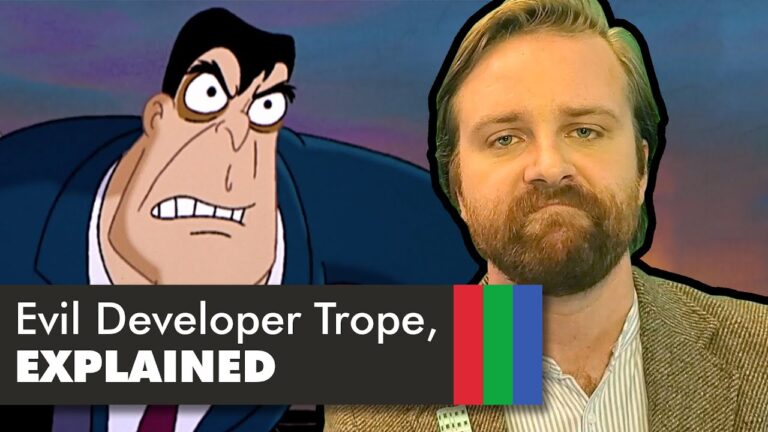Physical Address
304 North Cardinal St.
Dorchester Center, MA 02124
Physical Address
304 North Cardinal St.
Dorchester Center, MA 02124

Night City: the cyberpunk themed sandbox of William Gibson’s darkest tech-themed dreams, and despite the host of game-breaking glitches, home to all the anti-urban nightmares that the genre helped spawn. In this episode of Pop Culture Urbanism, I dig deep into the cyberpunk genre, the era that spawned and popularized it, and subsequent “unseen” opportunity cost of de-urbanization that continues to haunt us to this day. Be sure to follow future episodes by subscribing to the Pacific Legal Foundation on YouTube! We have a lot of content in the hopper that you won’t want to miss. Directed by Calvin Tran and produced by our friends at the Pacific Legal Foundation.

Welcome to Twin Peaks: home of black coffee, cherry pie, murder, intrigue, and the endangered pine weasel. To kick off season two of Pop Culture Urbanism, I dive into David Lynch’s eccentric nightmare/daytime soap opera world to examine the age old trope of the bad guy developer and how they manipulate environmental regulation to their financial advantage. Video goes live at noon PT 1/28! Be sure to follow future episodes by subscribing to the Pacific Legal Foundation on YouTube! We have a lot of content in the hopper that you won’t want to miss. For the New Urbs article that inspired this video, click here.

You might think the North Pole is the most magical place on earth. But behind the magic, our deep dive into the history of Christmas movies reveals that there’s more to it than that. In our firstPop Culture Urbanism holiday special, I explore the urban planning behind the North Pole. Be sure to follow future episodes by subscribing to the Pacific Legal Foundation on YouTube! We have a lot of content in the hopper that you won’t want to miss.

If there’s one thing that unites TV and film since the fifties, it’s the archetype of the dastardly developer – forever destroying homes and hiking rents. But it wasn’t always this way. Where did this trope come from, and is it true? This week on Pop Culture Urbanism, I dig into the cronyism and red tape that turned developers into Hollywood’s favorite villain. Be sure to follow future episodes by subscribing to the Pacific Legal Foundation on YouTube! We have a lot of content in the hopper that you won’t want to miss.

Has the Water Tribe gone full NIMBY? Can Avatar Aang overcome his angry impulse to preserve? Why is Ba Sing Se so segregated? And what can we learn from the success of Republic City? In this week’s episode of Pop Culture Urbanism, we explore the trade-offs and complications that every growing city has to deal with, including fictional cities of Avatar: The Last Airbender. Be sure to follow future episodes by subscribing to the Pacific Legal Foundation on YouTube! We have a lot of content in the hopper that you won’t want to miss.

Nolan Gray plunges into the Sam Raimi "Spider-Man" trilogy to uncover the housing problems (and solutions) of expensive cities like New York.

With Spider-Man: Far From Home hitting theaters earlier this month, the Marvel Cinematic Universe has taken one of the series’ biggest risks yet: pulling Spider-Man out of New York City. The gravity of this decision is baked into the film’s title — with good reason. More than any other Marvel superhero, Spider-Man is a uniquely urban superhero. Of course, his iconic powers — web-slinging and wall-crawling — depend on a forest of skyscrapers. But on a deeper level, Parker’s problems are quintessentially urban. Repeatedly, Peter encounters the issue of housing affordability, a recurring challenge for him and Aunt May in the comics and a key issue in the Sam Rami films from 2002 to 2007. In the Rami trilogy, Uncle Ben’s death pushes the family’s already-precarious financial situation into a monetary melee. We witness Aunt May desperately attempt to refinance, though she ultimately faces foreclosure and eviction. Rami’s Spider-Man (2002) stays true to the comics in putting Peter Parker’s family in Forest Hills — a well-heeled Queens neighborhood, depicted in the films as lower-middle class. Their home was assessed this year at approximately $850,000, which would entail a monthly mortgage payment of roughly $3,700 after a hefty downpayment. To make this affordable, Uncle Ben and Aunt May need to somehow make $135,000, a year before property taxes and upkeep. If that’s a stretch for a professional electrician, it’s impossible for a retired homemaker. The frustrations surrounding Aunt May’s eviction are an important part of Parker’s decision to give up being Spider-Man in the second film, and it’s easy to see why: May’s options post-eviction aren’t pretty. Assuming a standard Social Security check and a payout from Uncle Ben’s death, Aunt May really only has about $1,000 to spend on rent. Rising rents will make it tough to find a decent […]

We are blessed and cursed to live in times in which most smart people are expected to have an opinion on zoning. Blessed, in that zoning is arguably the single most important institution shaping where we live, how we move around, and who we meet. Cursed, in that zoning is notoriously obtuse, with zoning ordinances often cloaked in jargon, hidden away in PDFs, and completely different city-to-city. Given this unusual state of affairs, I’m often asked, “What should I read to understand zoning?” To answer this question, I have put together a list of books for the zoning-curious. These have been broken out into three buckets: “Introductory” texts largely lay out the general challenges facing cities, with—at most—high-level discussions of zoning. Most people casually interested in cities can stop here. “Intermediate” texts address zoning specifically, explaining how it works at a general level. These texts are best for people who know a thing or two about cities but would like to learn more about zoning specifically. “Advanced” texts represent the outer frontier of zoning knowledge. While possibly too difficult or too deep into the weeds to be of interest to most lay observers, these texts should be treated as essential among professional planners, urban economists, and urban designers. Before I start, a few obligatory qualifications: First, this not an exhaustive list. There were many great books that I left out in order to keep this list focused. Maybe you feel very strongly that I shouldn’t have left a particular book out. That’s great! Share it in the comments below. Second, while these books will give you a framework for interpreting zoning, they’re no substitute for understanding the way zoning works in your specific city. The only way to get that knowledge is to follow your local planning journalists, attend local […]

As zoning has become more restrictive over time, the need for “safety valve” mechanisms—which give developers flexibility within standard zoning rules—has grown exponentially. U.S. zoning officially has two such regulatory relief mechanisms: variances and special permits. Variances generally provide flexibility on bulk rules (e.g. setbacks, lot sizes) in exceptional cases where following the rules would entail “undue hardship.” Special permits (also called “conditional use permits”) generally provide flexibility on use rules in cases where otherwise undesirable uses may be appropriate or where their impacts can be mitigated. An extreme grade change is one reason why a lot might receive a variance, as enforcing the standard setback rules could make development impossible. Parking garages commonly require special use permits, since they can generate large negative externalities if poorly designed. Common conditions for permit approval include landscaping or siting the entrance in a way that minimizes congestion. (Wikipedia/Steve Morgan) In addition to these traditional, formal options, there’s a third, informal relief mechanism: spot zoning. This is the practice of changing the zoning map for an individual lot, redistricting it into another existing zone. Spot zonings are typically administered where the present zoning is unreasonable, but the conditions needed for a variance, special permit, or a full neighborhood rezoning aren’t. In many states, spot zonings are technically illegal. The thinking is that they are arbitrary in that they treat similarly situated lots differently. But in practice, many planning offices tolerate them, usually bundling in a few nearby similarly situated lots to avoid legal challenge. An example of a spot zoning. Variances, special permits, and spot zonings are generally considered to be the standard outlets for relief from zoning. But there’s a fourth mechanism that, to my knowledge, hasn’t been recognized: let’s call it the “spot text amendment.” Like spot zonings, spot text amendments […]

Over the past few years, Japanese zoning has become popular among YIMBYs thanks to a classic blog post by Urban kchoze. It’s easy to see why: Japanese zoning is relatively liberal, with few bulk and density controls, limited use segregation, and no regulatory distinction between apartments and single-family homes. Most development in Japan happens “as-of-right,” meaning that securing permits doesn’t require a lengthy review process. Taken as a whole, Japan’s zoning system makes it easy to build walkable, mixed-use neighborhoods, which is why cities like Tokyo are among the most affordable in the developed world. But praise for Japanese zoning skirts an important meta question: Why did U.S. zoning end up so much more restrictive than Japanese zoning? To frame the puzzle a different way, why did U.S. and Japanese land-use regulation—which both started off quite liberal—diverge so dramatically in terms of restrictiveness? I will suggest three factors; the first two set out the “why” for restrictive zoning and the third sets out the “how.” Any YIMBY efforts to liberalize cities in the long term must address these three factors. First, the U.S. privileges real estate as an investment where Japan does not, incentivizing voters to prohibit new supply with restrictive zoning. Second, most public services in the U.S. are administered at the local level, driving local residents to use exclusionary zoning to “preserve” public service quality. Third, the U.S. practice of near-total deference to local land-use planning and widespread use of discretionary permitting creates a system in which local special interests can capture zoning regulation and remake it around their interests. At the outset, why might Americans voters demand stricter zoning than their Japanese counterparts? One possibility is that they are trying to preserve the value of their only meaningful asset: their home. In the U.S., we use housing […]